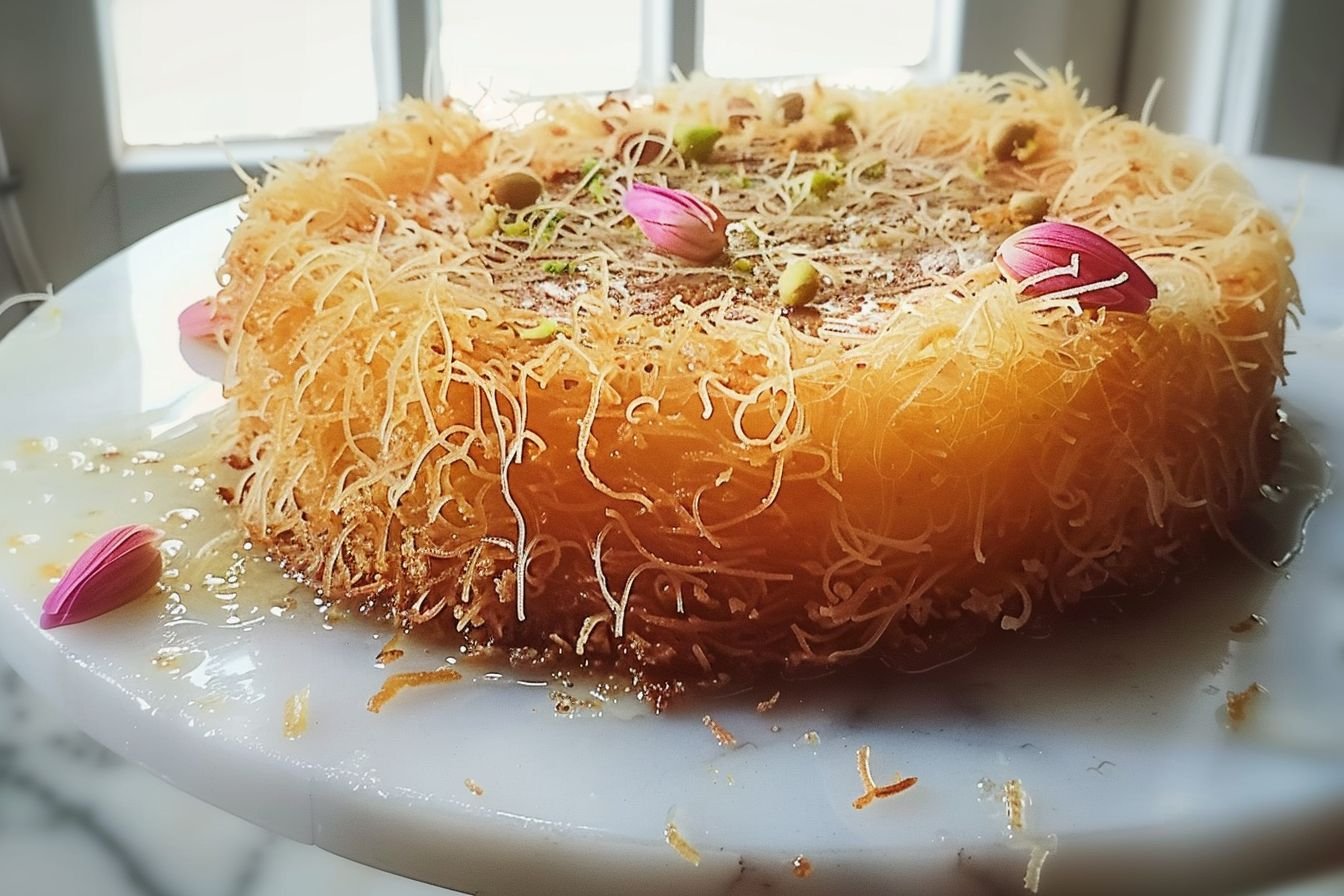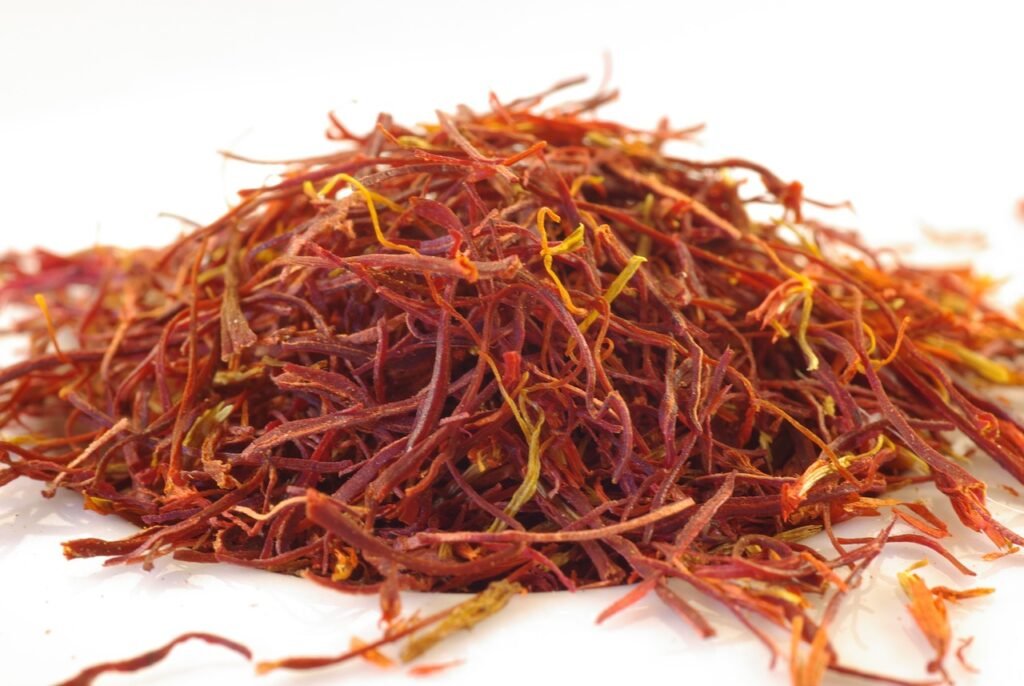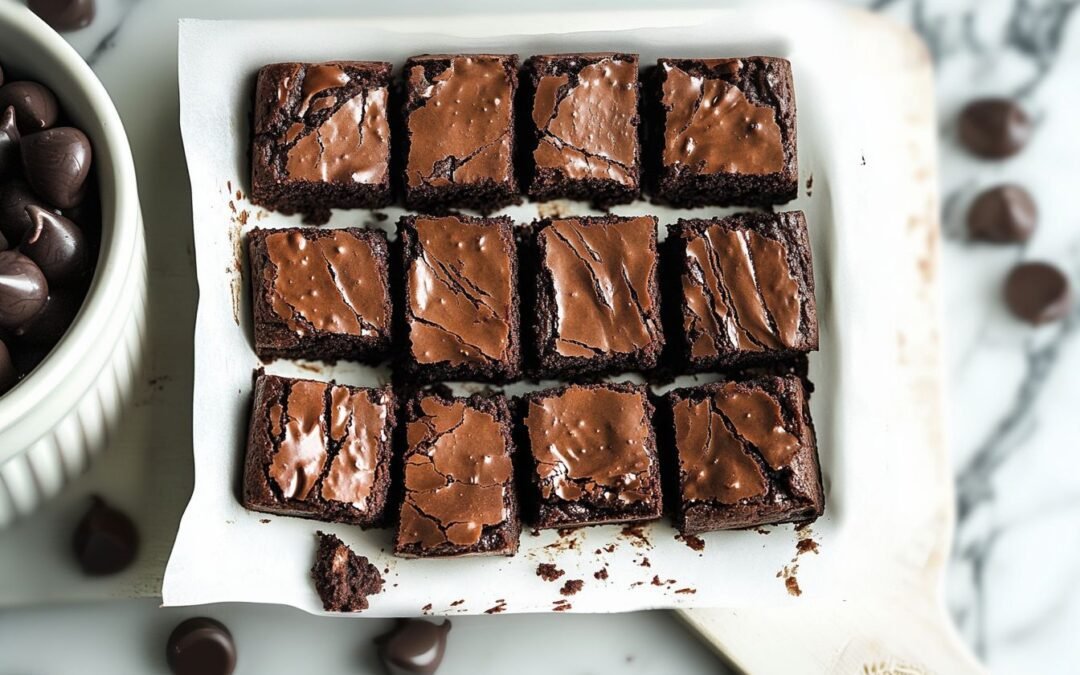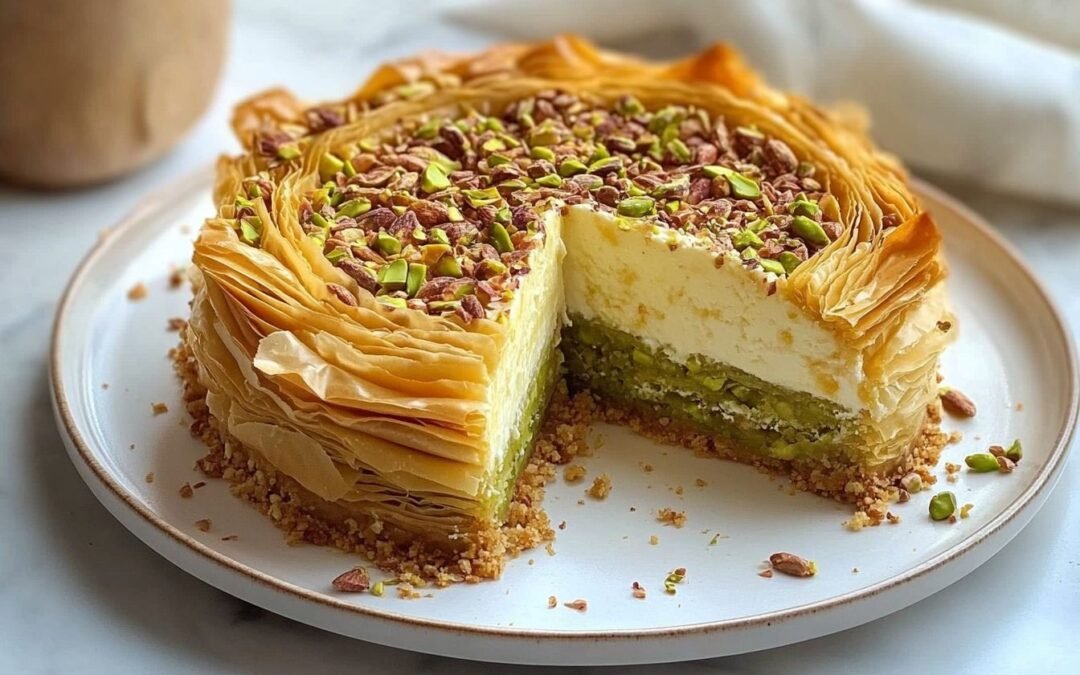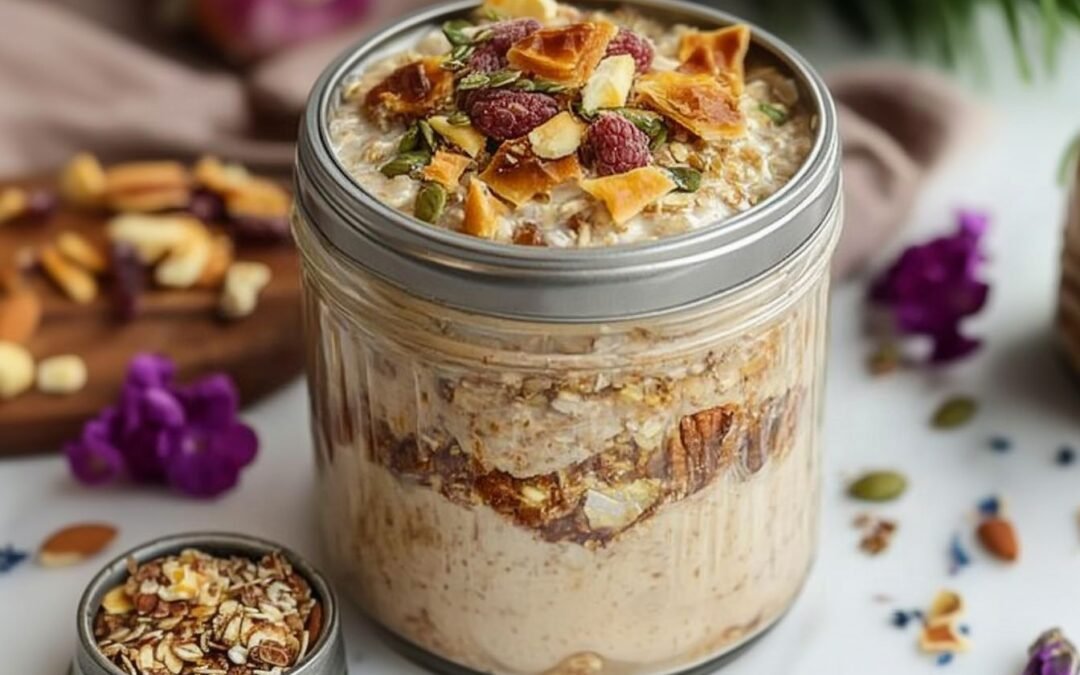Kunafa with saffron is a Middle Eastern treat made with shredded phyllo dough, melted butter, and a sweet syrup infused with saffron threads. The result is a crispy, golden pastry with a gooey cheese filling and a fragrant, floral flavor.
To make this dessert, you’ll need a few key ingredients. First up is the shredded phyllo dough, which can be found in the freezer section of most Middle Eastern grocery stores. You’ll also need unsalted butter, chopped pistachios or almonds (optional), and shredded mozzarella or akkawi cheese. For the syrup, you’ll need sugar, water, lemon juice, and of course, saffron threads. Don’t worry if you’ve never worked with saffron before – it’s easy to find and adds a unique depth of flavor to the syrup.
What Is Kunafa?
Origin of Kunafa
The origin of Kunafa can be traced back to the Levant region, which includes countries like Syria, Lebanon, Israel, and Jordan. It is believed that kunafa was first made in the city of Nablus in modern Israel today.
Kunafa Varieties
There are many varieties of Kunafa, and each one has its unique taste and texture. Some of the most popular Kunafa varieties include:
- Cheese Kunafa: This is the most common type of kunafa, and it is made with a mixture of shredded phyllo dough and cheese.
- Cream Kunafa: This variety of kunafa is made with a cream filling instead of cheese. It is a popular choice among those who prefer a sweeter taste.
- Nut Kunafa: This variety of kunafa is made with nuts, such as pistachios or almonds, instead of cheese or cream. It is a popular choice among those who prefer a nutty flavor.
Importance of Saffron
As a lover of Middle Eastern desserts, I can confidently say that saffron is one of the most important ingredients in the cuisine. This spice adds a unique flavor and aroma to dishes, making them stand out from the rest. In this section, I will discuss the significance of saffron in cooking and its health benefits.
Saffron in Cuisine
Saffron is commonly used in Middle Eastern, Indian, and Mediterranean cuisine. It is often added to desserts like kunafa, rice dishes like biryani, and even savory dishes like paella. Saffron is known for its distinct flavor and aroma, which can be described as floral, sweet, and earthy. A little bit of saffron goes a long way, and its bright color adds a beautiful touch to any dish.
Health Benefits of Saffron
Aside from its culinary uses, saffron also has several health benefits. It is rich in antioxidants, which help protect the body from free radicals that can cause cell damage. Saffron also has anti-inflammatory properties, which can help reduce inflammation in the body. Additionally, saffron has been shown to improve mood and relieve symptoms of depression and anxiety.
Ingredients:
- 1 package of kunafa dough (shredded phyllo dough), thawed if frozen
- 1 cup unsalted butter, melted
- 1 cup chopped pistachios or almonds (optional, for filling)
- 1 cup shredded mozzarella cheese or akkawi cheese
For the syrup:
- 1 ½ cups sugar
- 1 cup water
- 1 teaspoon lemon juice
- A pinch of saffron threads
How to Make Kunafa with Saffron?
- Start by preheating the oven to 350°F (175°C) and greasing a 9×13 inch baking dish with butter or cooking spray.
- Prepare the syrup by combining sugar, water, lemon juice, and saffron threads in a saucepan. Bring the mixture to a boil, stirring until the sugar is dissolved, and then reduce the heat to low and simmer for about 10-15 minutes until the syrup slightly thickens. Remove it from heat and set it aside to cool.
- Separate the kunafa dough strands gently with your fingers to avoid clumping them in a large bowl. Pour the melted butter over the dough and mix until the strands are evenly coated. Then, divide the kunafa dough into two equal portions.
- For layering, spread half of the kunafa dough evenly into the bottom of the prepared baking dish, pressing down firmly to create a compact layer. If you want, sprinkle the chopped nuts evenly over the dough.
- Then, spread the shredded cheese evenly over the nuts. Cover the cheese with the remaining half of the kunafa dough, pressing down gently.
- Place the baking dish in the preheated oven and bake for 30-35 minutes or until the kunafa is golden brown and crispy.
- When it’s ready, take the kunafa out of the oven and pour the cooled syrup all over it while it’s still hot, making sure it’s even, and allowing it to soak in. Let the kunafa cool for 10-15 minutes before slicing into squares or diamonds.
- Finally, serve the kunafa warm, garnished with additional chopped nuts if desired. It is a perfect dessert to enjoy with family and friends.
Serving Suggestions
Presentation Tips
Presentation is key when it comes to serving this kunafa. Here are some tips to help you make a stunning presentation:
- Use a white plate to make the colors of the kunafa and saffron stand out.
- Dust the top of the kunafa with powdered sugar for a touch of elegance.
- Garnish with fresh mint leaves or edible flowers for a pop of color.
Accompaniments
While this is delicious on its own, it can be even better when paired with the right accompaniments. Here are some ideas:
- Serve with a scoop of vanilla ice cream for a creamy contrast to the crunchy kunafa.
- For a fruity twist, offer a side of fresh fruit, such as sliced strawberries or raspberries.
- Pair with a cup of hot Arabic coffee to balance out the sweetness of the kunafa.
Pairing Drinks with Kunafa
Chai Tea
Chai tea is a classic pairing with kunafa. The warm spices in the tea, such as cinnamon and cardamom, enhance the flavors of the kunafa. I like to add a splash of milk to my chai tea to make it even creamier and more indulgent.
Turkish Coffee
Turkish coffee is another great option to pair with kunafa. The strong, bold flavor of the coffee contrasts with the sweetness of the dessert, creating a perfect balance. I recommend adding a pinch of saffron to the coffee for an extra burst of flavor.
Rose Water Lemonade
For a refreshing and light drink pairing, I love to sip on rose water lemonade with my kunafa. The floral notes of the rose water complement the saffron in the dessert, while the tartness of the lemonade cuts through the richness of the pastry.
Storing Kunafa
- Store kunafa in an airtight container to prevent it from drying out and becoming stale.
- Keep kunafa in the refrigerator for up to 3-4 days. It is best to consume it within this time frame to enjoy its delicious taste and texture.
- If you have leftover kunafa, you can freeze it for up to 2-3 months. However, it is important to note that the texture may change slightly after being frozen.
- When reheating kunafa, it is best to use an oven or toaster oven instead of a microwave. This will help retain its crispy texture and prevent it from becoming soggy.
Conclusion
I hope you enjoyed learning about kunafa with saffron as much as I enjoyed writing about it. This dessert is truly a treat for the senses, with its delicate balance of sweet and savory flavors, and its beautiful golden color.
As I mentioned earlier, this is a traditional Middle Eastern dessert that has been enjoyed for generations. It is made with simple ingredients but requires a bit of skill and patience to get it just right.
If you’re feeling adventurous, I highly recommend giving this recipe a try. It’s a great way to explore new flavors and techniques in the kitchen, and it’s sure to impress your friends and family.
Overall, kunafa with saffron is a delicious and unique dessert that is well worth trying. Whether you’re a seasoned chef or a beginner in the kitchen, this recipe is sure to delight your taste buds and leave you wanting more.
Just so you know, this is a great dessert to serve after serving mujadara with leeks.
Get this recipe now (by clicking the image below):
